Sub-Saharan Africa

Ethiopia 11 The plain tricolour has no legal status but is still flown unofficially.
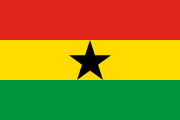
Ghana

Rwanda
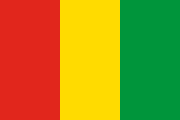
Guinea
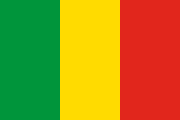
Mali
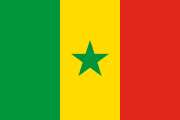
Senegal
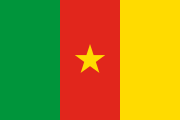
Cameroon
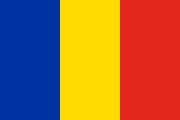
Chad
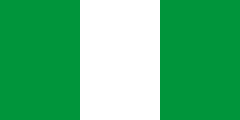
Nigeria
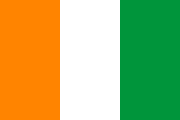
Côte d'Ivoire
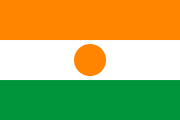
Niger
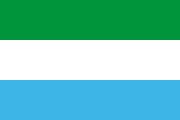
Sierra Leone
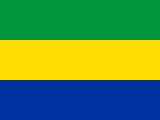
Gabon
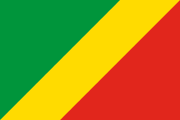
Congo
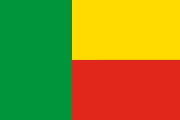
Benin
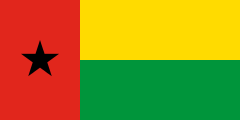
Guinea-Bissau
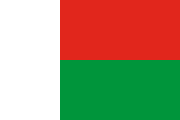
Madagascar
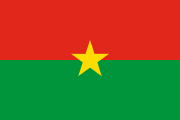
Burkina Faso
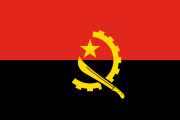
Angola
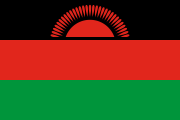
Malawi
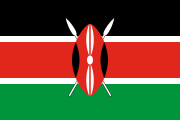
Kenya

African National Congress
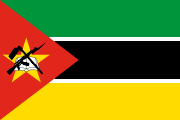
Mozambique
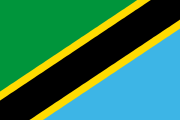
Tanzania
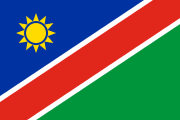
Namibia
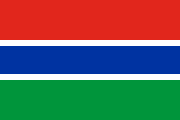
The Gambia
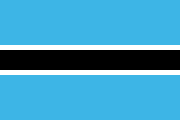
Botswana
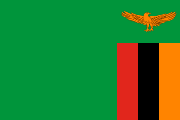
Zambia

Zaire
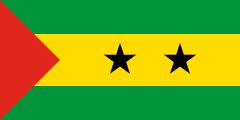
São Tomé and Príncipe
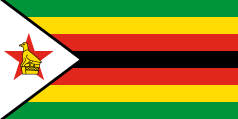
Zimbabwe
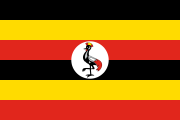
Uganda
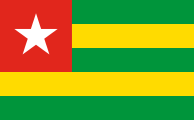
Togo
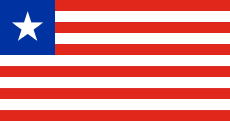
Liberia
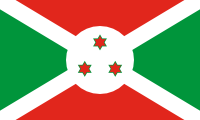
Burundi
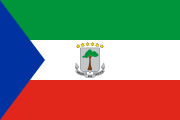
Equatorial Guinea

Lesotho
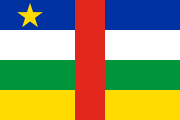
Central African Republic
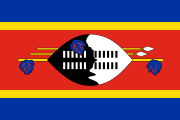
Swaziland

South Africa
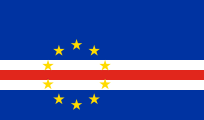
Cape Verde
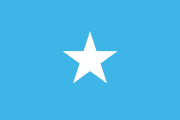
Somalia
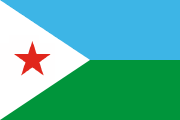
Djibouti

Eritrea
EPLF flag 22 Flag of the Eritrean Liberation Front, which sought independence from Ethiopia. Direct predecessor of the modern flag. The provincial government did not have an official flag.

Southern Sudan
SPLM flag 33 Flag of the Sudan People's Liberation Movement, which sought independence for the southern part of Sudan. Direct predecessor of the modern flag. The region did not have an official flag within Sudan.

Somaliland
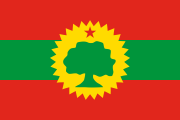
Oromia
OLF flag 44 Flag of the Oromo Liberation Front, a nationalist liberation movement within Ethiopia. Oromia did not have an official flag within Ethiopia at this time.
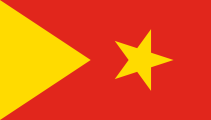
Tigray
TPLF flag 55 Flag of the Tigray People's Liberation Front, a nationalist liberation movement within Ethiopia. Direct predecessor of the modern regional flag. Tigray did not have an official flag within Ethiopia at this time.
Middle East and North Africa
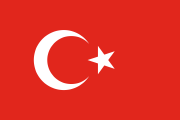
Turkey

Tunisia
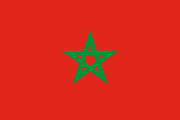
Morocco
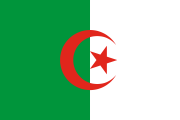
Algeria

Mauritania

Libya

Palestine
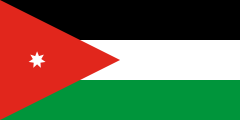
Jordan
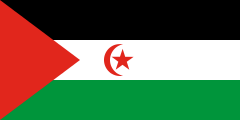
Western Sahara
Polisario flag 66 Flown by the Polisario Front and the unrecognized Sahrawi Arab Democratic Republic, which claims to be the rightful government of the disputed Western Sahara. Most of the territory is occupied by Morocco.
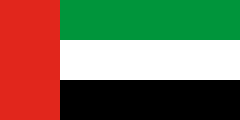
United Arab Emirates
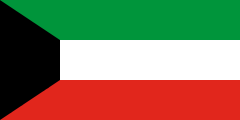
Kuwait
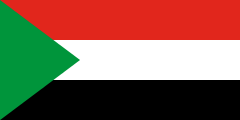
Sudan
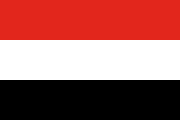
Yemen
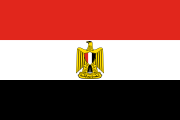
Egypt

Iraq
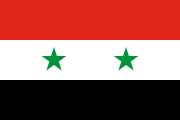
Syria
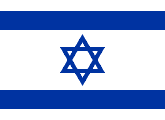
Israel

Cyprus
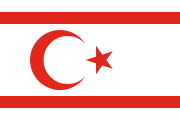
Northern Cyprus
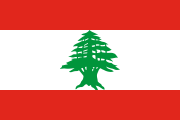
Lebanon
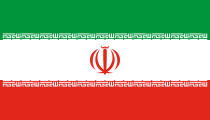
Iran

Oman

Bahrain
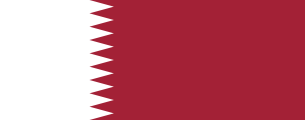
Qatar
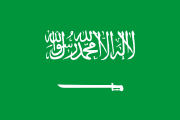
Saudi Arabia
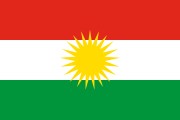
Kurdistan
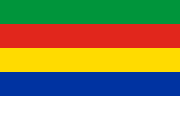
Druze
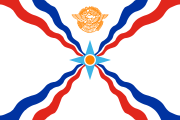
Assyrians
Western Europe
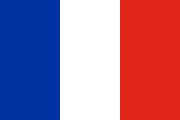
France
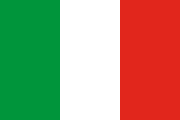
Italy
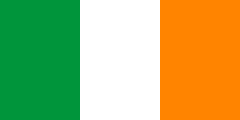
Ireland
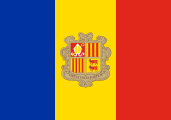
Andorra
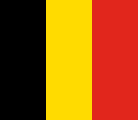
Belgium
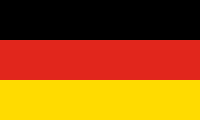
Germany
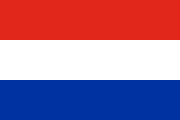
Netherlands
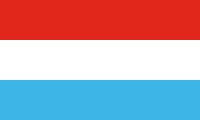
Luxembourg
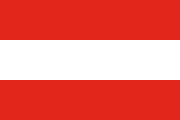
Austria
national flag 77 Flown by private citizens and municipalities.
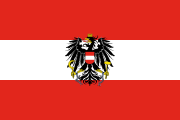
Austria
federal service flag 88 Flown by the federal government and the armed forces.
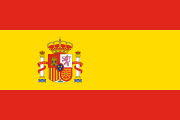
Spain
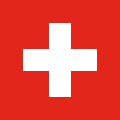
Switzerland
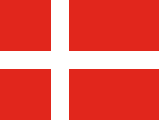
Denmark
national flag 99 Allowed to be flown by anyone.
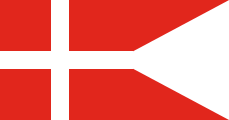
Denmark
sovereign flag 1010 Flown by the royal house, the government, and the armed forces. Also granted to a select list of private institutions and companies.
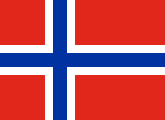
Norway
merchant flag 1111 Allowed to be flown by anyone.
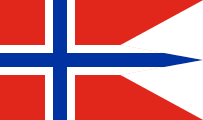
Norway
state flag 1212 Flown only on state-owned buildings and naval ships.
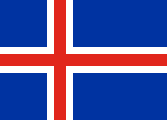
Iceland
national flag 1313 Allowed to be flown by anyone.
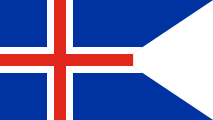
Iceland
state flag 1414 Flown on government buildings and coast guard ships.
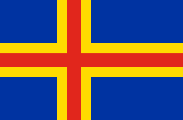
Åland
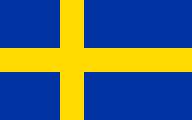
Sweden 1515 Flown for all purposes. A three-tailed version of the national flag is flown by the military.
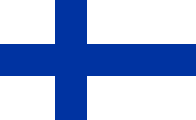
Finland
national flag 1616 Allowed to be flown by anyone.
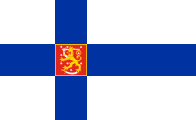
Finland
state flag 1717 Flown by the government, border guard, and public universities. The armed forces fly a version with a swallowtail cut.
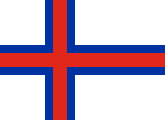
Faroe Islands
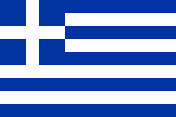
Greece
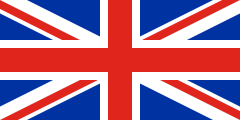
United Kingdom
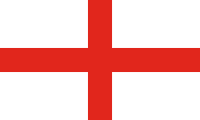
England
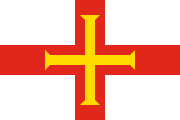
Guernsey
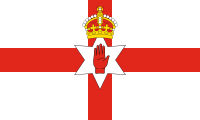
Northern Ireland
Ulster banner 1818 Northen Ireland has not had an official flag since 1973, but the Ulster Banner is still flown by some sporting teams and private citizens. More or less exclusively a unionist symbol. Nationalists tend to fly the Irish tricolour instead.
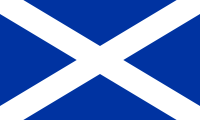
Scotland
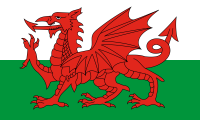
Wales
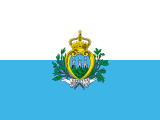
San Marino
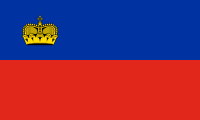
Liechtenstein
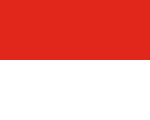
Monaco
national flag 1919 Allowed to be flown by anyone.
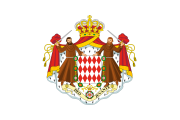
Monaco
princely flag 2020 Flown over the Prince's Palace and government buildings.
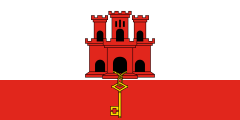
Gibraltar
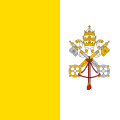
Vatican City
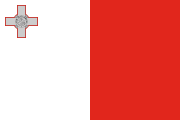
Malta
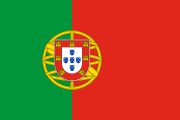
Portugal
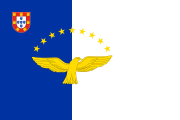
Azores
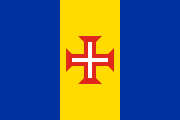
Madeira
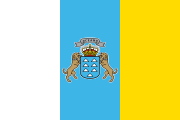
Canary Islands
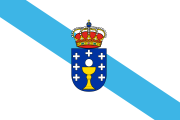
Galicia
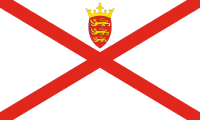
Jersey
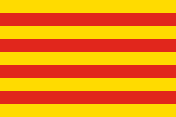
Catalonia
senyera 2121 The traditional Catalan flag, and the official flag of the Autonomous Community of Catalonia.
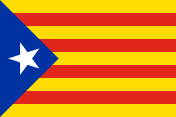
Catalonia
estelada 2222 The flag preferred by supporters of Catalan independence.
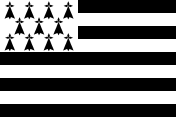
Brittany
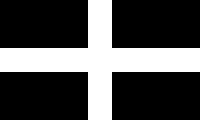
Cornwall
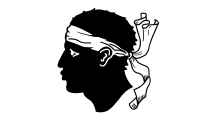
Corsica
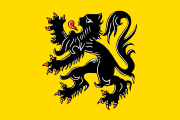
Flanders
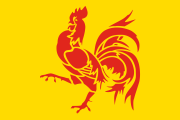
Wallonia
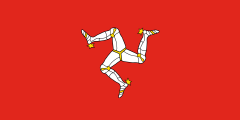
Isle of Man
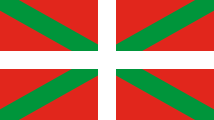
Basque Country
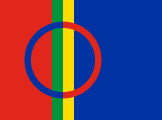
Sápmi
Eastern Europe

Russia
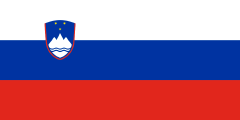
Slovenia
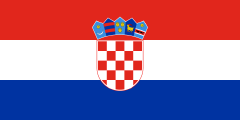
Croatia

Yugoslavia

Czechoslovakia
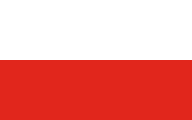
Poland
state flag 2323 Flown over the Presidential Palace, parliament, provincial legislatures, and other government buildings. Technically only allowed for private use on national holidays, but in practice flown throughout the year by anyone.
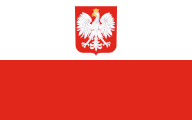
Poland
coat of arms flag 2424 Only supposed to be flown by embassies, airports, and merchant ships. In practice, flown by private citizens as well.

Belarus
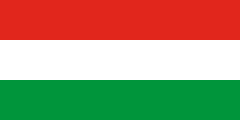
Hungary
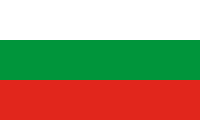
Bulgaria

Estonia
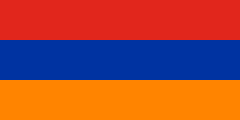
Armenia

Lithuania
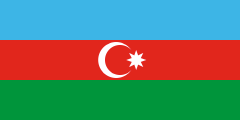
Azerbaijan
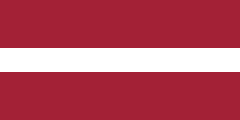
Latvia

Georgia
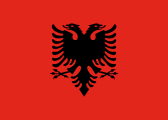
Albania

Macedonia
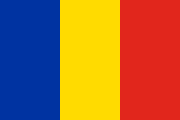
Romania
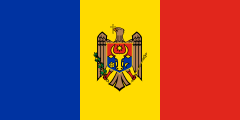
Moldova 2525 The back side of the flag was just a plain tricolour.
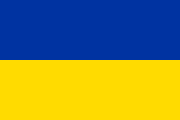
Ukraine

Bosnia and Herzegovina
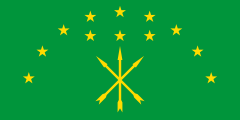
Adygea
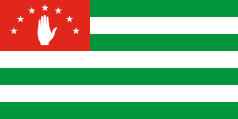
Abkhazia

Chechnya
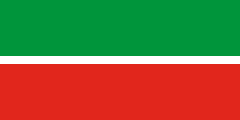
Tatarstan
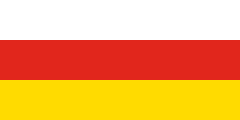
Ossetia 2626 Flown by the breakaway Georgian region of South Ossetia and the Russian republic of North Ossetia.
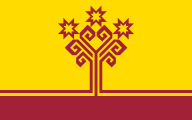
Chuvashia

Kalmykia

Mari El

Bashkortostan

Gagauzia
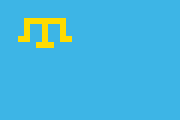
Crimean Tatar
Central Asia and Siberia

Afghanistan

Afghanistan
Mazar‑i‑Sharif 2727 Flown by Abdul Rashid Dostum's proto-state in Mazar-i-Sharif.
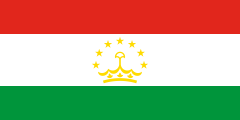
Tajikistan

Kyrgyzstan
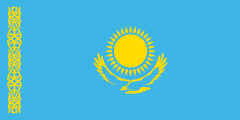
Kazakhstan

Turkmenistan
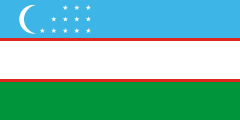
Uzbekistan
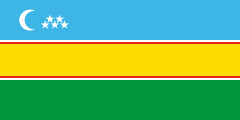
Karakalpakstan
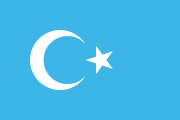
East Turkestan 2828 The national flag of the Uyghur people, banned within the People's Republic of China. Xinjiang Province does not have an official flag.
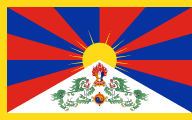
Tibet 2929 Banned within the People's Republic of China. The Tibet Autonomous Region does not have a flag.
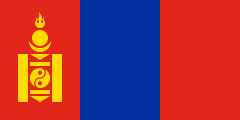
Mongolia
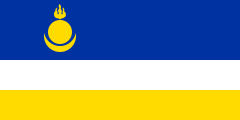
Buryatia

Tuva
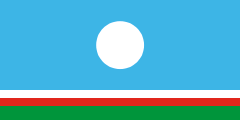
Sakha

Altai
South Asia and the Indian Ocean
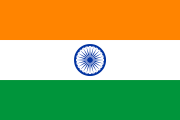
India
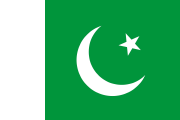
Pakistan
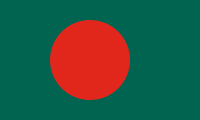
Bangladesh

Nepal
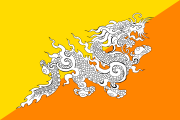
Bhutan
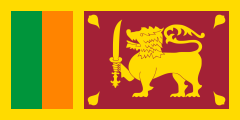
Sri Lanka
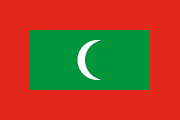
Maldives

Comoros

Seychelles
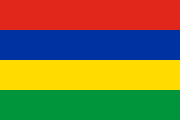
Mauritius

Mayotte 3030 Flown by the departmental council and used as a local flag.
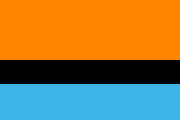
Chagos Islands 3131 Flown by the Chagossians, who were forcibly removed from the islands by the British to make way for a military base. The islands are officially administered as the British Indian Ocean Territory, which has a colonial ensign with a wavy white and blue stripes and a palm tree badge.

Jammu and Kashmir 3232 Flown in the Indian-controlled parts of the disputed region of Kashmir.
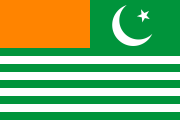
Azad Kashmir 3333 Flown in the Pakistan-controlled parts of the disputed region of Kashmir.
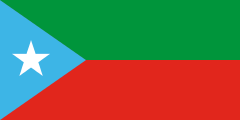
Balochistan 3434 Flown by Baloch nationalists seeking independence from Pakistan, Iran, and Afghanistan. The star is sometimes flipped upside down or replaced by a white sun. The provincial government of Balochistan in Pakistan flies a green flag with a white camel emblem.
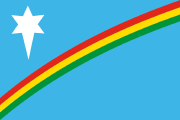
Nagaland 3535 Flown by nationalists and separatists. The Indian state of Nagaland does not have an official flag.
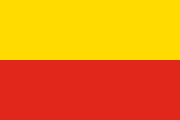
Kannada 3636 The popular but unofficial flag of the Kannada people. The Indian state of Karnataka does not have an official flag.
East and Southeast Asia
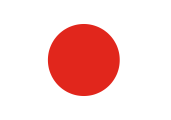
Japan
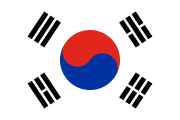
South Korea
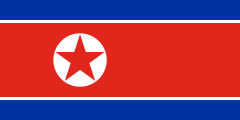
North Korea
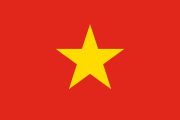
Vietnam
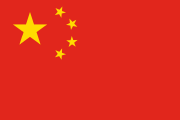
China
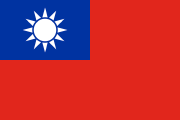
Taiwan 3737 The flag of the Republic of China, which is the government of Taiwan. Banned on the mainland, as the People's Republic of China claims sovereignty over the island. At major international sporting events like the Olympics, Taiwan competes under the name "Chinese Taipei" and flies a neutral flag.

Myanmar
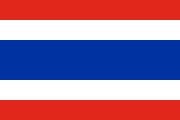
Thailand
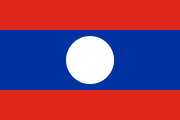
Laos

Cambodia 3838 Flown by the United Nations Transitional Authority in Cambodia, which briefly controlled Cambodia and oversaw elections after the end of the Third Indochina War.
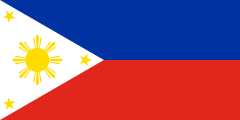
Philippines
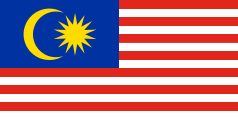
Malaysia
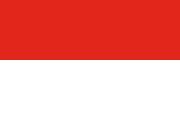
Indonesia
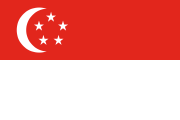
Singapore
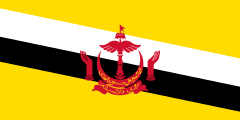
Brunei
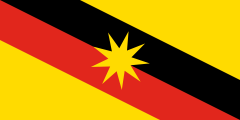
Sarawak
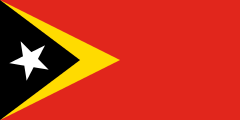
East Timor 3939 Flown by nationalists seeking the indpenedence of Timor-Leste. Under Indonesian occupation, flying the flag was illegal. The rarely-used official flag of "Timor Timur" was orange with the provincial seal in the middle.
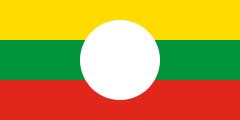
Shan
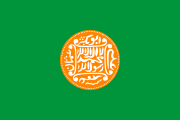
Rohingya

Muslim Mindanao
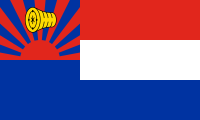
Karen 4040 Flown by Karen nationalists seeking independence and separation from Myanmar. Kayin State has its own flag, a blue-white-red tricolour with a white star in the top left.
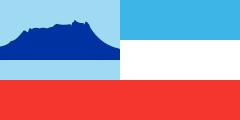
Sabah
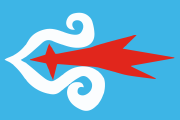
Ainu
Oceania
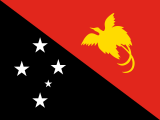
Papua New Guinea
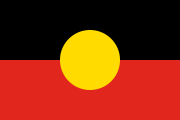
Aboriginal Australians
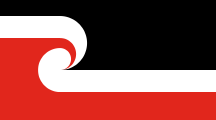
Māori
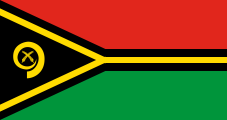
Vanuatu
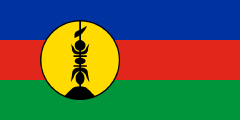
Kanaky-New Caledonia
FLNKS flag 4141 Flag of the Kanak and Socialist National Liberation Front, which sought the independence from France.
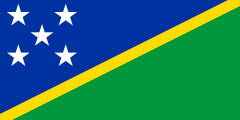
Solomon Islands
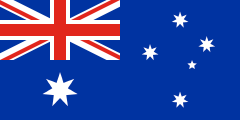
Australia
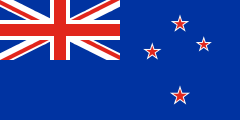
Aotearoa New Zealand
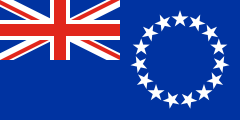
Cook Islands
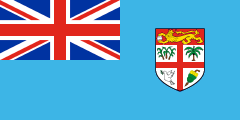
Fiji
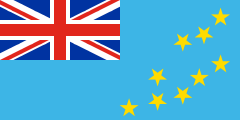
Tuvalu
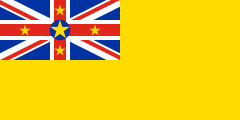
Niue
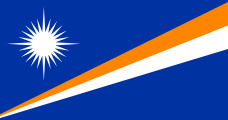
Marshall Islands
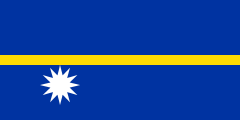
Nauru
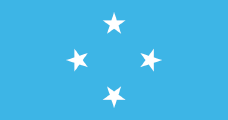
Micronesia
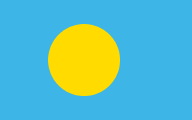
Palau
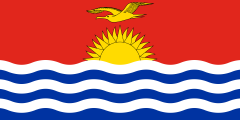
Kiribati
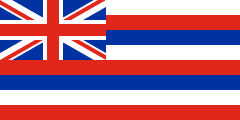
Hawaiʻi
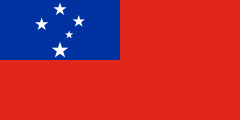
Western Samoa
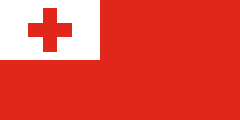
Tonga
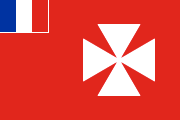
Wallis and Futuna
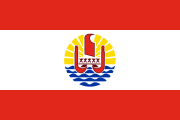
Maohi Nui
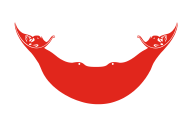
Rapa Nui

Northern Mariana Islands
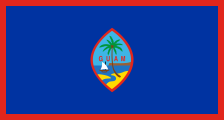
Guam
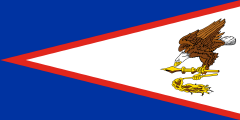
American Samoa
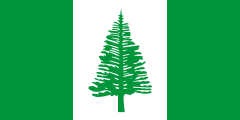
Norfolk Island
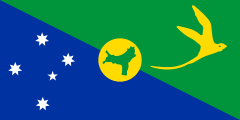
Christmas Island
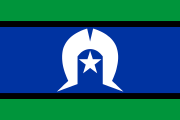
Torres Strait Islands
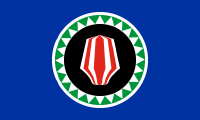
Bougainville
North America
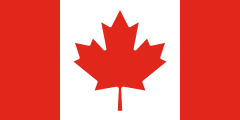
Canada
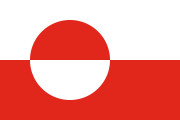
Greenland
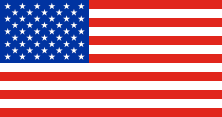
United States

Bermuda
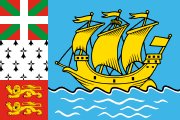
Saint Pierre and Miquelon 4242 A popular but unofficial local flag.
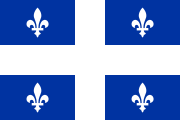
Québec
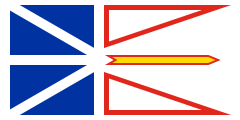
Newfoundland
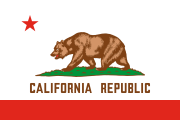
California
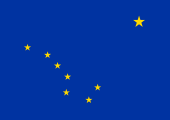
Alaska
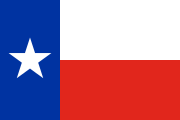
Texas
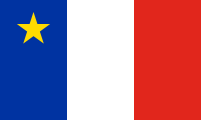
Acadia
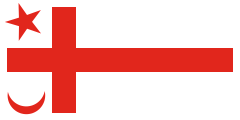
Mi’kmaq
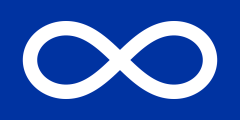
Métis
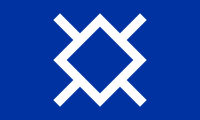
Northern Cheyenne
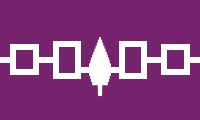
Haudenosaunee
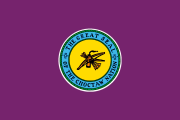
Choctaw
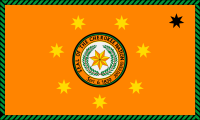
Cherokee
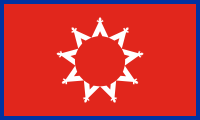
Oglala Lakota
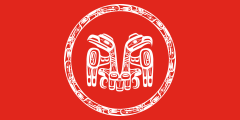
Haida
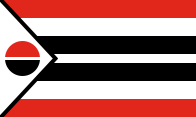
Arapaho
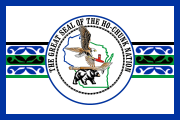
Ho-Chunk
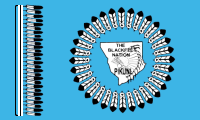
Blackfeet

Seminole
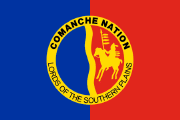
Comanche
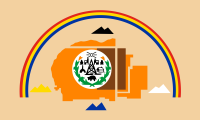
Navajo
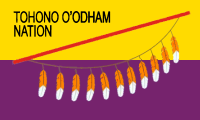
Tohono O’odham
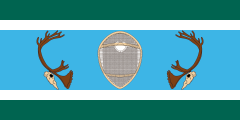
Innu
The Caribbean
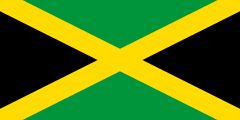
Jamaica
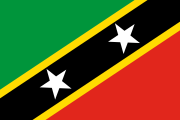
Saint Kitts and Nevis
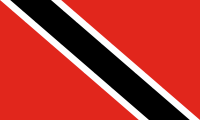
Trinidad and Tobago
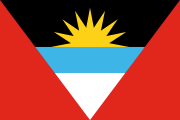
Antigua and Barbuda
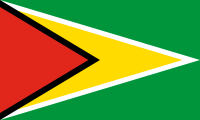
Guyana
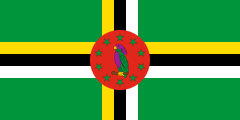
Dominica
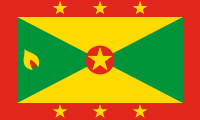
Grenada
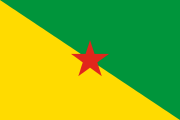
Guyane
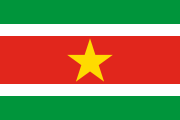
Suriname
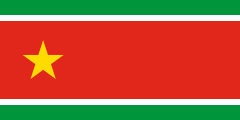
Guadeloupe 4343 An unofficial flag flown by Guadeloupe nationalists. There is also a rarely used "heraldic banner" based on the coat of arms of Pointe-à-Pitre.
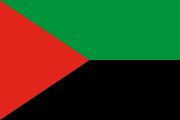
Martinique 4444 An unofficial flag flown by Martinican nationalists and occasionally by local municipalities.
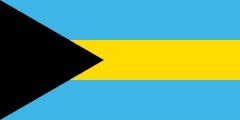
The Bahamas
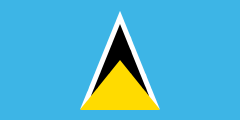
Saint Lucia
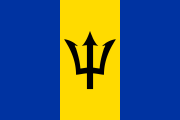
Barbados
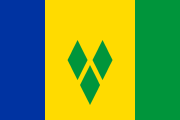
Saint Vincent and the Grenadines
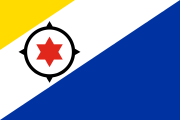
Bonaire
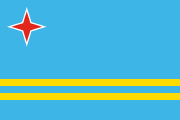
Aruba
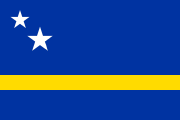
Curaçao
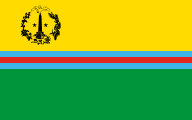
Saint Martin
unity flag 4545 A common cultural flag representing both the French and Dutch halves of the island of Saint Martin.
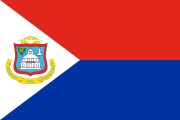
Saint Martin (Dutch)
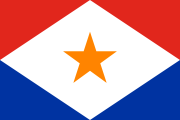
Saba

Netherlands Antilles
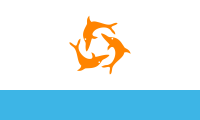
Anguilla 4646 The unofficial but popular cultural flag of the island.
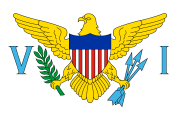
Virgin Islands (U.S.)

Belize
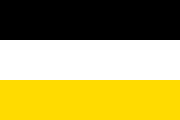
Garifuna
Latin America
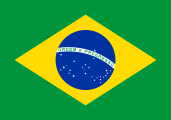
Brazil
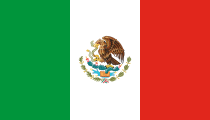
Mexico
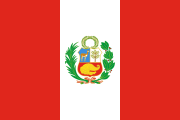
Peru
national ensign 4747 Flown by the government, the navy, the national police, and national sports teams. Raised at major ceremonies. The army uses a similar flag with a different coat of arms.
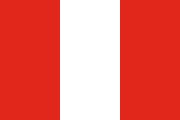
Peru
national flag 4848 Allowed to be flown by anyone.
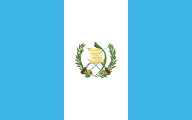
Guatemala
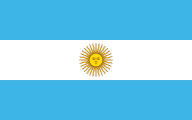
Argentina

Honduras
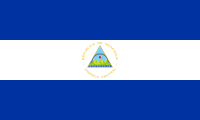
Nicaragua
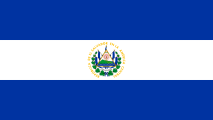
El Salvador
national flag 4949 The most common flag, flown over most government buildings, at ceremonies, by diplomatic missions and often by public citizens.
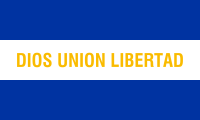
El Salvador
inscribed flag 5050 An alternative government flag, most commonly flown by the armed forces but also on some public buildings and offices.
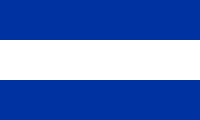
El Salvador
plain flag 5151 The simplest version of the national flag, flown by some private citizens.

Paraguay
front side

Paraguay
back side
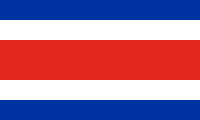
Costa Rica
national flag 5252 The most common Costa Rican flag. Officially designated for private citizens, but in practice often used on government buildings and schools too.

Costa Rica
national ensign 5353 Flown by the government and by diplomatic missions, although also used sometimes by private citizens.
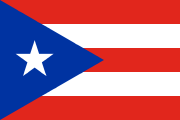
Puerto Rico
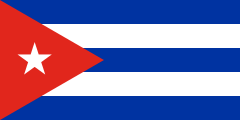
Cuba
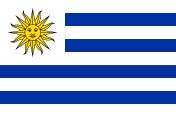
Uruguay
national flag 5454 Allowed to be flown by anyone.
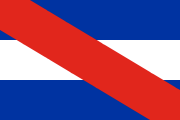
Uruguay
flag of Artigas 5555 A traditional military emblem, ceremonially flown alongside the national flag at government buildings.
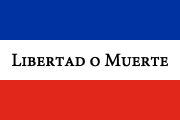
Uruguay
flag of the Treinta y Tres 5656 A historic flag, ceremonially flown alongside the national flag at government buildings.
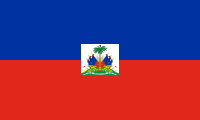
Haiti
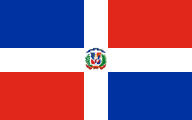
Dominican Republic
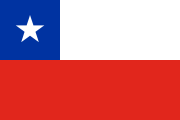
Chile
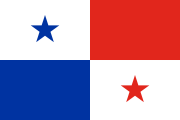
Panama

Venezuela
national ensign 5757 Flown by the government and armed forces, and unofficially used by many private citizens.

Venezuela
national flag 5858 Allowed to be flown by anyone.
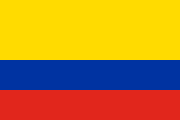
Colombia
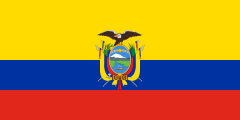
Ecuador

Bolivia
state flag 5959 Flown by the governmnent. The armed forces flew a similar flag with olive and laurel branches around the coat of arms.
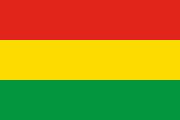
Bolivia
national flag 6060 Allowed to be flown by anyone.
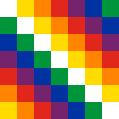
Aymara
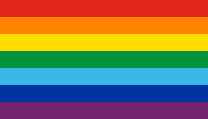
Quechua
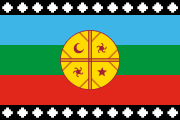
Mapuche
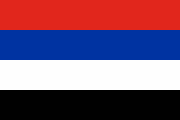
Misak
Other International and Cultural Flags
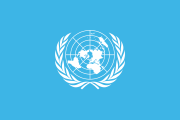
United Nations
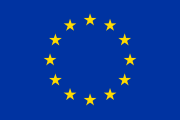
Europe

Organization of African Unity

Commonwealth of Nations
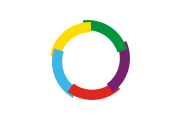
La Francophonie
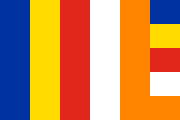
Buddhist Flag
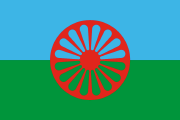
Romani
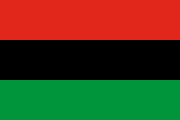
Pan-African Flag
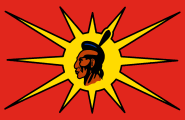
Warrior Flag
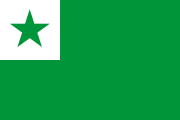
Esperanto

Red Cross
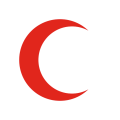
Red Crescent
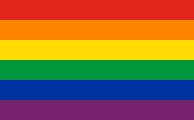
Pride Flag
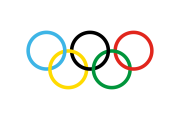
Olympic Games
Events of 1992
ABKHAZIA • Abkhazia declared its unrecognized independence from Georgia on July 23.

AFGHANISTAN • In January, Russia withdrew the last of its aid to the Najibullah regime, and the government quickly fell to the mujahideen. Kabul was taken on April 27, and the new Islamic State of Afghanistan was proclaimed the next day. The new government flew a provisional flag with Islamic inscriptions until December 6, when the country's traditional mosque emblem was restored to the flag.








Meanwhile in the north, the warlord Abdul Rashid Dostum established an autonomous proto-state based in Mazar-i-Sharif. He based his flag on the one which had been flown by the Republic of Afghanistan from 1974-1978.

ALBANIA • The socialist star was removed from the national flag on April 7.



BOSNIA AND HERZEGOVINA • On March 3, following an independence referendum that was boycotted by the country's Serbian community, Bosnia and Herzegovina declared independence from Yugoslavia. It provisionally adopted a flag with the coat of arms of the medieval Kingdom of Bosnia on March 27. The flag was never accepted by the country's Serbian community and would eventually be changed after the signing of the Dayton accords.



BRAZIL • On May 11, four more stars (representing Amapá, Rondônia, Roraima, and Tocantins) were added to the national flag.



CAMBODIA • A United Nations transitional authority was established on March 15 under a temporary neutral flag. Unofficially, the old red blue and gold flag of the State of Cambodia continued to be flown within the country during the transition.
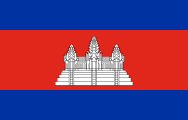



CAPE VERDE • On September 22, Cape Verde adopted a completely new flag to symbolize a break with its former socialist policies and a closer connection with the west. The ten golden stars represented the ten main islands of the nation.



CENTRAL ASIA • Four former Soviet republics in Central Asia adopted their first post-independence flags. Turkmenistan was the first on February 19. The red stripe on the left side of the flag was emblazoned with five carpet patterns, one from each of the major Turkmen tribes.



Kyrgyzstan adopted a flag depicting the sky as viewed through the roof of a yurt on March 3.



Kazakhstan adopted a flag with a golden-eagle in flight on top of a sky blue background on on June 4.



Tajikistan became the last former Soviet state to adopt a unique national flag on November 24. It closely resembled the flags of Iran and Kurdistan but also evoked the colour scheme of the Tajik SSR. The broad white stripe represented cotton — the country's main agricultural export.



COMOROS • Comoros adopted a new flag with the crescent and stars pointing upwards on June 7.



HO-CHUNK • The Ho-Chunk Nation of Wisconsin adopted a tribal flag sometime this year.

KARAKALPAKSTAN • Karakalpakstan, an autonomous republic in Uzbekistan, adopted a flag which closely resembled the Uzbek national flag on February 14.

MACEDONIA • The former Yugoslav republic of Macedonia adopted its first post-independence flag on August 11, depicting the Vergina Sun, a decorative motif in ancient Greek art which had been found some fifteen years earlier on the purported coffin of King Philip of Macedon. The adoption of the flag was immediately controversial in neighbouring Greece, and Macedonia was forced to abandon the symbol under diplomatic pressure only three years later. Despite its short official lifespan, the flag remained popular with Macedonian nationalists and continues to be flown to this day.



MAPUCHE • The Council of All Lands selected a flag for the Mapuche Nation on October 5. The central emblem was a cultrun drum with symbols depicting the sun, the moon, the stars, and the four cardinal directions.

MONGOLIA • The socialist star was removed from the flag when a new constitution came into effect on February 12.



MUSLIM MINDANAO • The Autonomous Region in Muslim Mindanao, which had been established within the Philippines three years earlier, adopted a regional flag.

PARAGUAY • On August 25, the flag ratio was shortened from 37:20 to 5:3 and the design of the national seal was modified.






RUSSIA • A number of autonomous republics adopted flags: Bashkortostan (based on the 1918 flag of Bashkiria) on February 25, Adygea (based on the old national flag of Circassia) on March 24, Chuvashia (showing a tree of life) on April 29, Altai on May 3, Mari El (showing an ancient solar symbol) on September 3, Tuva (representing the course of the Yensei River) on September 18, Sakha (depicting the sun over the taiga) on October 14, Kalmykia (showing a fire symbol) on October 30, and Buryatia (showing a Mongol symbol) on November 29.









TORRES STRAIT ISLANDS • The Torres Strait Islanders, an indigenous group of Australia, adopted a flag on May 29. The central emblem was a dhari headdress. It would soon become an official flag of Australia, alongside the Aboriginal flag.

YUGOSLAVIA • The socialist star was removed from the national flag on April 27.



Notes
1 The plain tricolour has no legal status but is still flown unofficially. ↩
2 Flag of the Eritrean Liberation Front, which sought independence from Ethiopia. Direct predecessor of the modern flag. The provincial government did not have an official flag. ↩
3 Flag of the Sudan People's Liberation Movement, which sought independence for the southern part of Sudan. Direct predecessor of the modern flag. The region did not have an official flag within Sudan. ↩
4 Flag of the Oromo Liberation Front, a nationalist liberation movement within Ethiopia. Oromia did not have an official flag within Ethiopia at this time. ↩
5 Flag of the Tigray People's Liberation Front, a nationalist liberation movement within Ethiopia. Direct predecessor of the modern regional flag. Tigray did not have an official flag within Ethiopia at this time. ↩
6 Flown by the Polisario Front and the unrecognized Sahrawi Arab Democratic Republic, which claims to be the rightful government of the disputed Western Sahara. Most of the territory is occupied by Morocco. ↩
7 Flown by private citizens and municipalities. ↩
8 Flown by the federal government and the armed forces. ↩
9 Allowed to be flown by anyone. ↩
10 Flown by the royal house, the government, and the armed forces. Also granted to a select list of private institutions and companies. ↩
11 Allowed to be flown by anyone. ↩
12 Flown only on state-owned buildings and naval ships. ↩
13 Allowed to be flown by anyone. ↩
14 Flown on government buildings and coast guard ships. ↩
15 Flown for all purposes. A three-tailed version of the national flag is flown by the military. ↩
16 Allowed to be flown by anyone. ↩
17 Flown by the government, border guard, and public universities. The armed forces fly a version with a swallowtail cut. ↩
18 Northen Ireland has not had an official flag since 1973, but the Ulster Banner is still flown by some sporting teams and private citizens. More or less exclusively a unionist symbol. Nationalists tend to fly the Irish tricolour instead. ↩
19 Allowed to be flown by anyone. ↩
20 Flown over the Prince's Palace and government buildings. ↩
21 The traditional Catalan flag, and the official flag of the Autonomous Community of Catalonia. ↩
22 The flag preferred by supporters of Catalan independence. ↩
23 Flown over the Presidential Palace, parliament, provincial legislatures, and other government buildings. Technically only allowed for private use on national holidays, but in practice flown throughout the year by anyone. ↩
24 Only supposed to be flown by embassies, airports, and merchant ships. In practice, flown by private citizens as well. ↩
25 The back side of the flag was just a plain tricolour. ↩
26 Flown by the breakaway Georgian region of South Ossetia and the Russian republic of North Ossetia. ↩
27 Flown by Abdul Rashid Dostum's proto-state in Mazar-i-Sharif. ↩
28 The national flag of the Uyghur people, banned within the People's Republic of China. Xinjiang Province does not have an official flag. ↩
29 Banned within the People's Republic of China. The Tibet Autonomous Region does not have a flag. ↩
30 Flown by the departmental council and used as a local flag. ↩
31 Flown by the Chagossians, who were forcibly removed from the islands by the British to make way for a military base. The islands are officially administered as the British Indian Ocean Territory, which has a colonial ensign with a wavy white and blue stripes and a palm tree badge. ↩
32 Flown in the Indian-controlled parts of the disputed region of Kashmir. ↩
33 Flown in the Pakistan-controlled parts of the disputed region of Kashmir. ↩
34 Flown by Baloch nationalists seeking independence from Pakistan, Iran, and Afghanistan. The star is sometimes flipped upside down or replaced by a white sun. The provincial government of Balochistan in Pakistan flies a green flag with a white camel emblem. ↩
35 Flown by nationalists and separatists. The Indian state of Nagaland does not have an official flag. ↩
36 The popular but unofficial flag of the Kannada people. The Indian state of Karnataka does not have an official flag. ↩
37 The flag of the Republic of China, which is the government of Taiwan. Banned on the mainland, as the People's Republic of China claims sovereignty over the island. At major international sporting events like the Olympics, Taiwan competes under the name "Chinese Taipei" and flies a neutral flag. ↩
38 Flown by the United Nations Transitional Authority in Cambodia, which briefly controlled Cambodia and oversaw elections after the end of the Third Indochina War. ↩
39 Flown by nationalists seeking the indpenedence of Timor-Leste. Under Indonesian occupation, flying the flag was illegal. The rarely-used official flag of "Timor Timur" was orange with the provincial seal in the middle. ↩
40 Flown by Karen nationalists seeking independence and separation from Myanmar. Kayin State has its own flag, a blue-white-red tricolour with a white star in the top left. ↩
41 Flag of the Kanak and Socialist National Liberation Front, which sought the independence from France. ↩
42 A popular but unofficial local flag. ↩
43 An unofficial flag flown by Guadeloupe nationalists. There is also a rarely used "heraldic banner" based on the coat of arms of Pointe-à-Pitre. ↩
44 An unofficial flag flown by Martinican nationalists and occasionally by local municipalities. ↩
45 A common cultural flag representing both the French and Dutch halves of the island of Saint Martin. ↩
46 The unofficial but popular cultural flag of the island. ↩
47 Flown by the government, the navy, the national police, and national sports teams. Raised at major ceremonies. The army uses a similar flag with a different coat of arms. ↩
48 Allowed to be flown by anyone. ↩
49 The most common flag, flown over most government buildings, at ceremonies, by diplomatic missions and often by public citizens. ↩
50 An alternative government flag, most commonly flown by the armed forces but also on some public buildings and offices. ↩
51 The simplest version of the national flag, flown by some private citizens. ↩
52 The most common Costa Rican flag. Officially designated for private citizens, but in practice often used on government buildings and schools too. ↩
53 Flown by the government and by diplomatic missions, although also used sometimes by private citizens. ↩
54 Allowed to be flown by anyone. ↩
55 A traditional military emblem, ceremonially flown alongside the national flag at government buildings. ↩
56 A historic flag, ceremonially flown alongside the national flag at government buildings. ↩
57 Flown by the government and armed forces, and unofficially used by many private citizens. ↩
58 Allowed to be flown by anyone. ↩
59 Flown by the governmnent. The armed forces flew a similar flag with olive and laurel branches around the coat of arms. ↩
60 Allowed to be flown by anyone. ↩